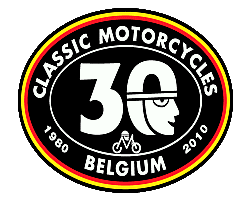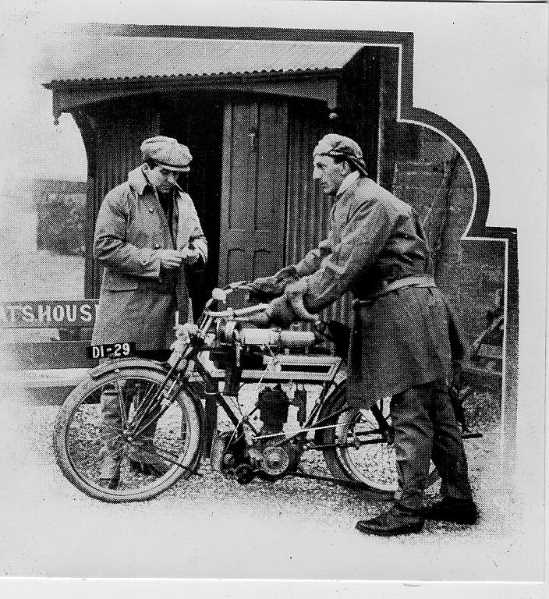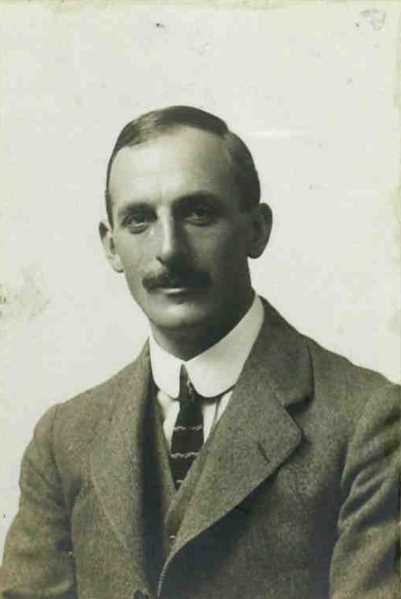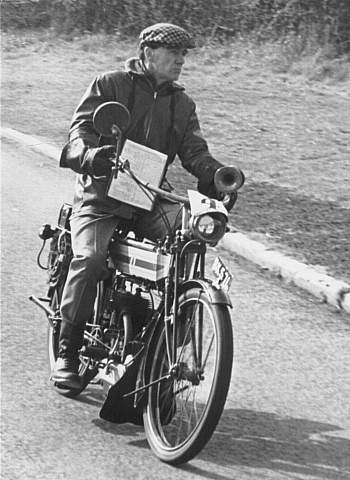


In
memory of
a good friend,
Douglas George Bailey who
passed away Sept 2008. Written by Bill Phelps and originally printed in
the VMCC journal of October 1966. Updated June 2009.
DOUG
BAILEY AND HIS END TO END ON
A
VETERAN
The run from John
O’Groats to Lands End
was quite
popular before 1911, record times were set up for sidecar machines and
for
solos.
 Ivan
Beauclerk Hart-Davies made several successful attempts on the record
from 1909 to 1911 riding Triumph motorcycles. The very last record was
made by him when he took a 1911 Triumph 3 1/2 h.p. over the route in 29
hours 12 minutes.
The
R.A.C. then decided that these feats were becoming dangerous to the
public, and
so declared that they would not recognise any further attempts to bring
down
the record.
Ivan
Beauclerk Hart-Davies made several successful attempts on the record
from 1909 to 1911 riding Triumph motorcycles. The very last record was
made by him when he took a 1911 Triumph 3 1/2 h.p. over the route in 29
hours 12 minutes.
The
R.A.C. then decided that these feats were becoming dangerous to the
public, and
so declared that they would not recognise any further attempts to bring
down
the record.
 Ivan
Beauclerk Hart-Davies was
born on the 21st April 1878 in Huntingdon to Welsh parents John and
Florence Hart-Davies. Educated at King's school, in Canterbury, he
became a schoolmaster at the New Beacon school, Sevenoaks. After giving
up
school teaching, Hart-Davies became an insurance broker in the
Midlands
and was listed in Kellys for 1912 as being at 17 Bank Street, Rugby. On
the 6th October 1913 he
qualified as a pilot on a Grahame-White biplane at Hendon, and it was
rumoured that he only took up flying to try to set another
John o’ Groats to Land’s End speed record, by air. However, it was
flying that led to his death: he was killed on the 27th July 1917 on a
training flight as a pilot in the Royal Flying Corps. He was a
Lieutenant in 35
training squadron and age 39 at the time of the accident on
the 27th July. He was flying a Bristol fighter
F2B number A7103. His observer 2nd Lt Miller was also injured in the
accident.
An obituary notice in The
Times recorded
that, with three other motorcyclists, he won the Mürren Cup, despite
the fact that none of the team had ever done any bobsleighing before -
he also ran the 'I B
Hart-Davies XI' playing cricket in Kent. A fellow officer,
quoted
by The Times,
called Hart-Davis a ‘gallant
fellow whom we all liked immensely’. He is buried at St
James, Southam, Warwickshire churchyard.
Ivan
Beauclerk Hart-Davies was
born on the 21st April 1878 in Huntingdon to Welsh parents John and
Florence Hart-Davies. Educated at King's school, in Canterbury, he
became a schoolmaster at the New Beacon school, Sevenoaks. After giving
up
school teaching, Hart-Davies became an insurance broker in the
Midlands
and was listed in Kellys for 1912 as being at 17 Bank Street, Rugby. On
the 6th October 1913 he
qualified as a pilot on a Grahame-White biplane at Hendon, and it was
rumoured that he only took up flying to try to set another
John o’ Groats to Land’s End speed record, by air. However, it was
flying that led to his death: he was killed on the 27th July 1917 on a
training flight as a pilot in the Royal Flying Corps. He was a
Lieutenant in 35
training squadron and age 39 at the time of the accident on
the 27th July. He was flying a Bristol fighter
F2B number A7103. His observer 2nd Lt Miller was also injured in the
accident.
An obituary notice in The
Times recorded
that, with three other motorcyclists, he won the Mürren Cup, despite
the fact that none of the team had ever done any bobsleighing before -
he also ran the 'I B
Hart-Davies XI' playing cricket in Kent. A fellow officer,
quoted
by The Times,
called Hart-Davis a ‘gallant
fellow whom we all liked immensely’. He is buried at St
James, Southam, Warwickshire churchyard.
During 1965 some
members of
the South
Wales Section of the Vintage Motor Cycle Club have been discussing a
non-stop
run from end to end in the spirit of those achieved by Hart-Davies.
Doug Bailey arranged to
attempt the run on his 1911 3+ h.p. Triumph, identical to the machine
Ivan
Hart-Davies used for his final record. So Sunday, August 28th 1966, saw
a Morris 1000 van leave Cardiff
for John O’Groats with Doug Bailey, Graham Gardiner,
Doug’s son Denis and the Triumph aboard. The van was to “shadow” Doug
on his non-stop run, keeping a log and supplying petrol when needed.
The two
drivers taking shifts at driving. Good time was made to John O’Groats
with an
over night stop in Ayr
on Sunday.
The run started on Tuesday
morning, August 30th,
1966, at 8.18 a.m. It was misty and raining. 25 miles out the engine of
the
Triumph seized. A big end. Retracing steps to Wick an engineering firm
kindly
obliged to repair the big end. Six hours cleaning the crank pin and
making a
new bush using the metal out of the old bush. Cost 3~/-.
A
great deal of time had been lost so it
was decided
to return to The Groats and restart. Tuesday afternoon at 4.06 p.m. the
Triumph
once again set off, travelling slowly at first, to ease in the big end
bush.
6.24 p.m. and 76 miles gone Doug was fed some rolls and tea from the
van. All
meals were taken this way throughout the whole journey.
At 7.08 p.m., just after a steep
climb
and 99 miles
from the start, an exhaust valve snapped on the Triumph. This was
replaced with
a spare in eight minutes and the journey continued. Visibility was down
to 20
yards at times.
The Kessock ferry was reached
and
crossed by 8.30
p.m. Dark was falling and the electric lights which had been rigged on
the bike
had long since shaken adrift. So a pedal
cycle
lamp was
strapped to
Doug’s belt and
they continued. Perth
was reached at 12.55 and an all-night garage stood the travellers a cup
of tea.
It rained ceaselessly all through the night. At 5.43 a.m. the Triumph
was
stopped by the police for not having any lights to the rear. But was
let off
with a caution.
They crossed the border into England
at 6.10
a.m. Upon reaching Shap at 7.25 a.m. — 418 miles from John O’Groats —
the
second exhaust valve snapped. The only garage with a machine shop
would not be open
until 9 a.m. So a wait of an hour and a half was called for and a good
feed.
The mechanic turned up and promptly stated that he hadn’t any valves
for a 1911
Triumph Motor Cycle.
However, after much persuasion and
bribing a valve of
the same stem diameter was found and the head ground down to size, the
stem cut
to length and a slot drilled in the stem. The valve was fitted and the
Triumph
took the road again at 10.35 a.m., having lost some three hours.
Another 48 miles and the Triumph was at
the first
service centre on the M6 for petrol, oil and a five minutes rest. Good
time was
made down the motorway — 35 to 40 m.p.h. all the way. At 3.27 p.m. the
Triumph
was in Wolverhampton
having covered 577 miles.
The traffic was solid and barely moving, so Doug pushed the machine
along the
pavement, leaving his escort in the van to battle their way through.
After the van got out of Wolverhampton
they were delayed even further with a puncture, which put the Triumph
about one
hour ahead of them.
The Triumph, on the MS now, was running
low on oil,
so turned off to Worcester,
as the escort still had not caught up. Back on to the MS and by the
time the
Kenning Service Centre was reached at 5.40 p.m. — some 622 miles from
John
O’Groats — the escort had caught up with the bike.
By now the veteran saddle was beginning
to tell on
Doug and his right foot and leg began to swell after being numb for
some 100
miles or so.
The bike passed through Tewkesbury and Gloucester
doing well. Bristol was reached by
8.0 p.m. on the Wednesday, having covered 676 miles. Here the front
brake cable
snapped during an emergency stop. The escort had to push the Triumph
off, as
Doug by this time, couldn’t place his right leg on the ground.
Bridgewater
was made by 9.11 p.m. and a
blanket tied around the
Triumph saddle
to give a softer ride. At Taunton
by 9.35 p.m., having covered 720 miles, it started to rain once more.
Launceston was reached by 1.00 a.m. and
with only 80
miles to go, it was decided to rest as the van escort was beginning to
wander
over the road. Re-started again at 7.32 a.m., having stopped for
six-and-a-half
hours.
Three miles further on and the belt
snapped — a new
one was fitted and the Triumph continued. Nine more miles and a link
was
removed from the belt, and another
link after another five miles.
The belt then settled and Redruth was
reached at 9.45
a.m., with only 27 miles to cover.
 Lands
End was reached at 10.54
a.m. on
Thursday, the
first of September, having covered 880 miles in 42 hours 48 minutes —
stoppages
were around 10 hours altogether — so the distance was covered in 32
hours 48
minutes, averaging 27 m.p.h. on the road. Quite a feat for a
55-year-old single
gear machine and a 43-year-old driver.
Lands
End was reached at 10.54
a.m. on
Thursday, the
first of September, having covered 880 miles in 42 hours 48 minutes —
stoppages
were around 10 hours altogether — so the distance was covered in 32
hours 48
minutes, averaging 27 m.p.h. on the road. Quite a feat for a
55-year-old single
gear machine and a 43-year-old driver.
The total cost of
the venture was around
£57.
This Photo of
Doug and his
Triumph was taken during the
Vale of Glamorgan Road Trial in 1968 – before it became compulsory to
wear a
helmet in June 1973.






 Ivan
Beauclerk Hart-Davies made several successful attempts on the record
from 1909 to 1911 riding Triumph motorcycles. The very last record was
made by him when he took a 1911 Triumph 3 1/2 h.p. over the route in 29
hours 12 minutes.
The
R.A.C. then decided that these feats were becoming dangerous to the
public, and
so declared that they would not recognise any further attempts to bring
down
the record.
Ivan
Beauclerk Hart-Davies made several successful attempts on the record
from 1909 to 1911 riding Triumph motorcycles. The very last record was
made by him when he took a 1911 Triumph 3 1/2 h.p. over the route in 29
hours 12 minutes.
The
R.A.C. then decided that these feats were becoming dangerous to the
public, and
so declared that they would not recognise any further attempts to bring
down
the record. Ivan
Beauclerk Hart-Davies was
born on the 21st April 1878 in Huntingdon to Welsh parents John and
Florence Hart-Davies. Educated at King's school, in Canterbury, he
became a schoolmaster at the New Beacon school, Sevenoaks. After giving
up
school teaching, Hart-Davies became an insurance broker in the
Midlands
and was listed in Kellys for 1912 as being at 17 Bank Street, Rugby. On
the 6th October 1913 he
qualified as a pilot on a Grahame-White biplane at Hendon, and it was
rumoured that he only took up flying to try to set another
John o’ Groats to Land’s End speed record, by air. However, it was
flying that led to his death: he was killed on the 27th July 1917 on a
training flight as a pilot in the Royal Flying Corps. He was a
Lieutenant in 35
training squadron and age 39 at the time of the accident on
the 27th July. He was flying a Bristol fighter
F2B number A7103. His observer 2nd Lt Miller was also injured in the
accident.
An obituary notice in The
Times recorded
that, with three other motorcyclists, he won the Mürren Cup, despite
the fact that none of the team had ever done any bobsleighing before -
he also ran the 'I B
Hart-Davies XI' playing cricket in Kent. A fellow officer,
quoted
by The Times,
called Hart-Davis a ‘gallant
fellow whom we all liked immensely’. He is buried at St
James, Southam, Warwickshire churchyard.
Ivan
Beauclerk Hart-Davies was
born on the 21st April 1878 in Huntingdon to Welsh parents John and
Florence Hart-Davies. Educated at King's school, in Canterbury, he
became a schoolmaster at the New Beacon school, Sevenoaks. After giving
up
school teaching, Hart-Davies became an insurance broker in the
Midlands
and was listed in Kellys for 1912 as being at 17 Bank Street, Rugby. On
the 6th October 1913 he
qualified as a pilot on a Grahame-White biplane at Hendon, and it was
rumoured that he only took up flying to try to set another
John o’ Groats to Land’s End speed record, by air. However, it was
flying that led to his death: he was killed on the 27th July 1917 on a
training flight as a pilot in the Royal Flying Corps. He was a
Lieutenant in 35
training squadron and age 39 at the time of the accident on
the 27th July. He was flying a Bristol fighter
F2B number A7103. His observer 2nd Lt Miller was also injured in the
accident.
An obituary notice in The
Times recorded
that, with three other motorcyclists, he won the Mürren Cup, despite
the fact that none of the team had ever done any bobsleighing before -
he also ran the 'I B
Hart-Davies XI' playing cricket in Kent. A fellow officer,
quoted
by The Times,
called Hart-Davis a ‘gallant
fellow whom we all liked immensely’. He is buried at St
James, Southam, Warwickshire churchyard.  Lands
End was reached at 10.54
a.m. on
Thursday, the
first of September, having covered 880 miles in 42 hours 48 minutes —
stoppages
were around 10 hours altogether — so the distance was covered in 32
hours 48
minutes, averaging 27 m.p.h. on the road. Quite a feat for a
55-year-old single
gear machine and a 43-year-old driver.
Lands
End was reached at 10.54
a.m. on
Thursday, the
first of September, having covered 880 miles in 42 hours 48 minutes —
stoppages
were around 10 hours altogether — so the distance was covered in 32
hours 48
minutes, averaging 27 m.p.h. on the road. Quite a feat for a
55-year-old single
gear machine and a 43-year-old driver.